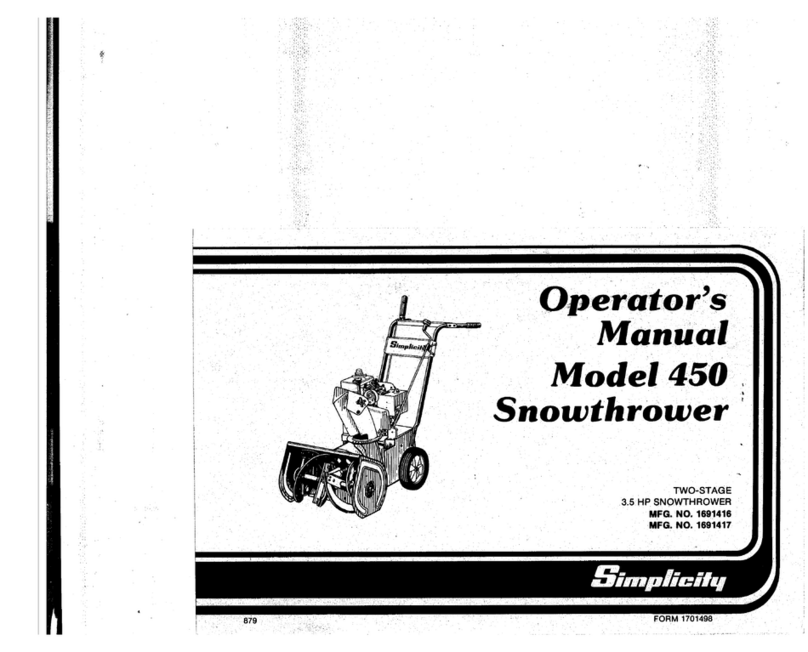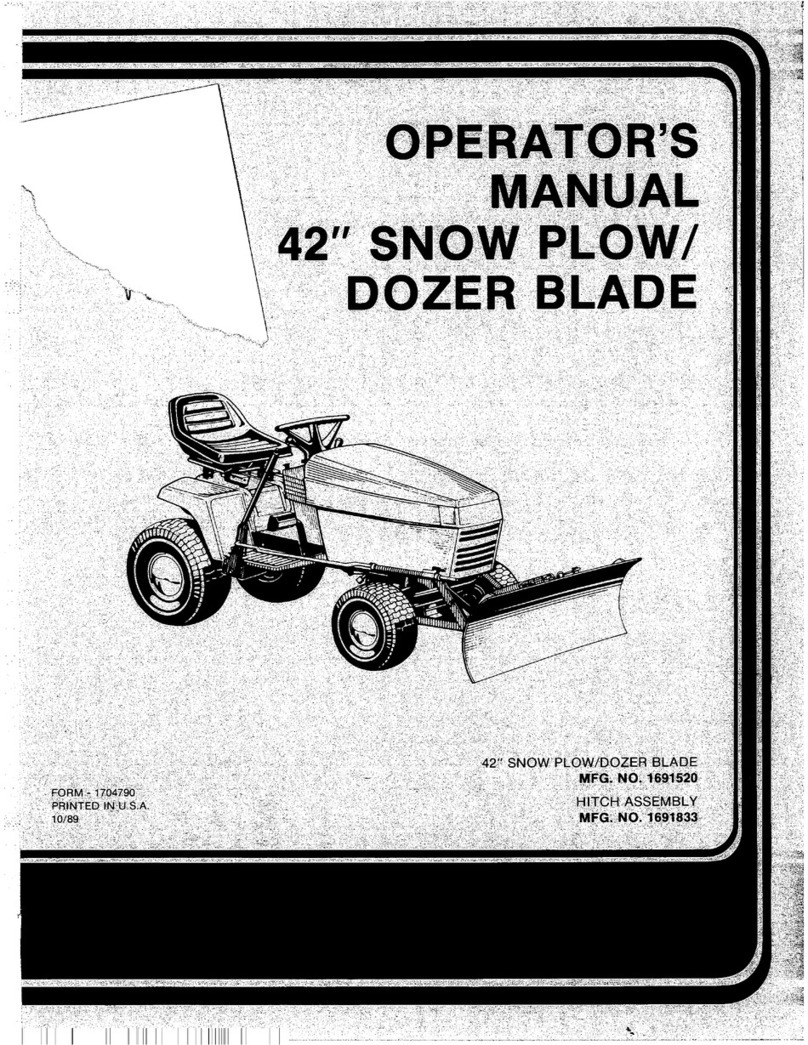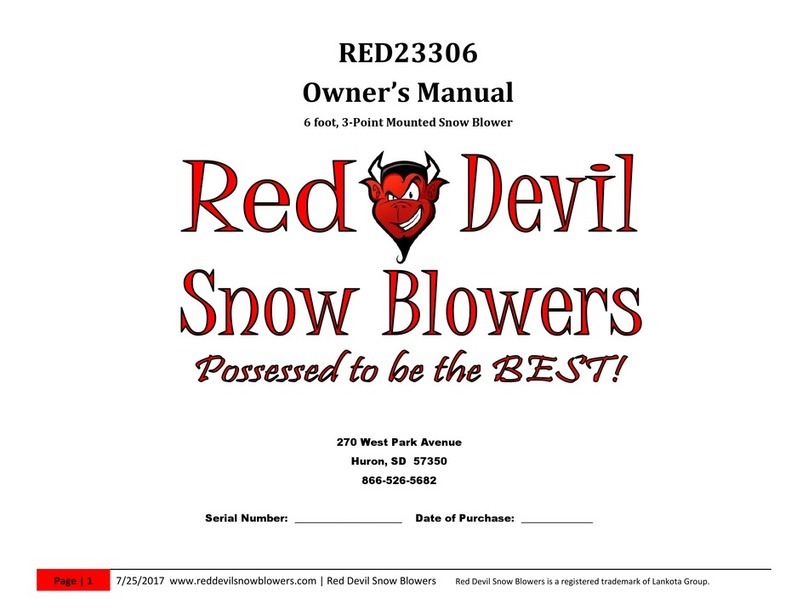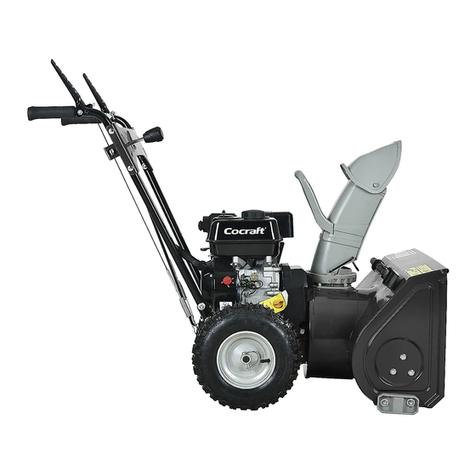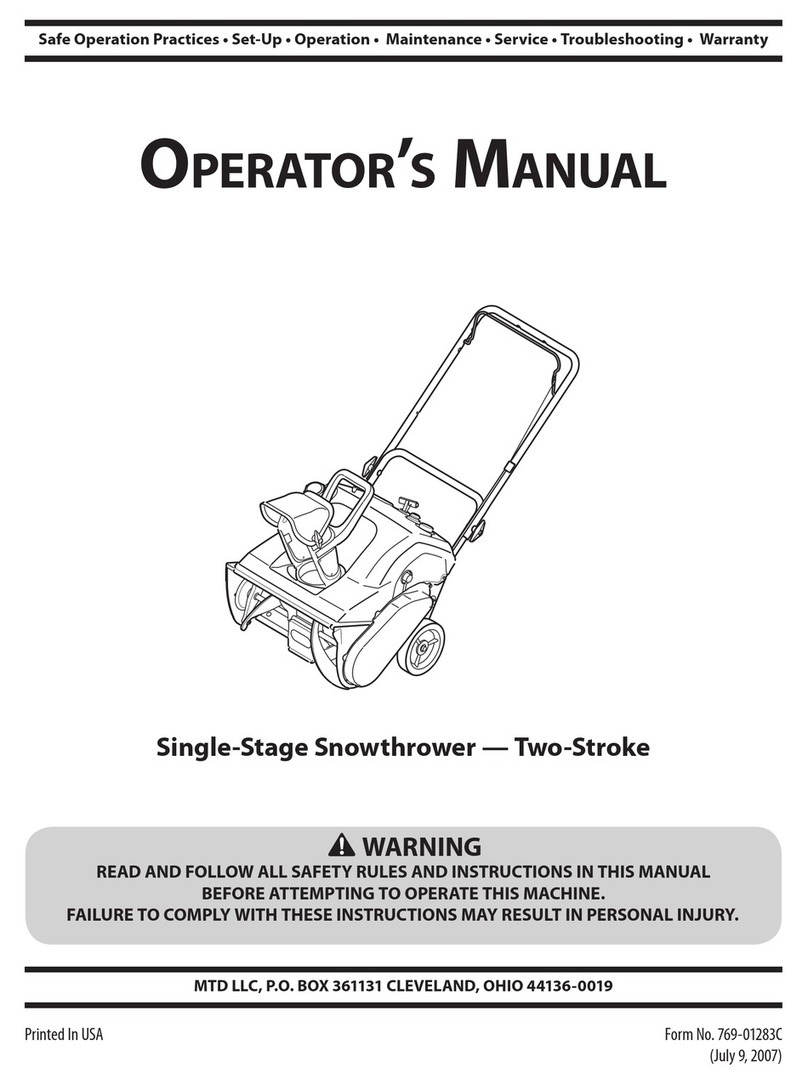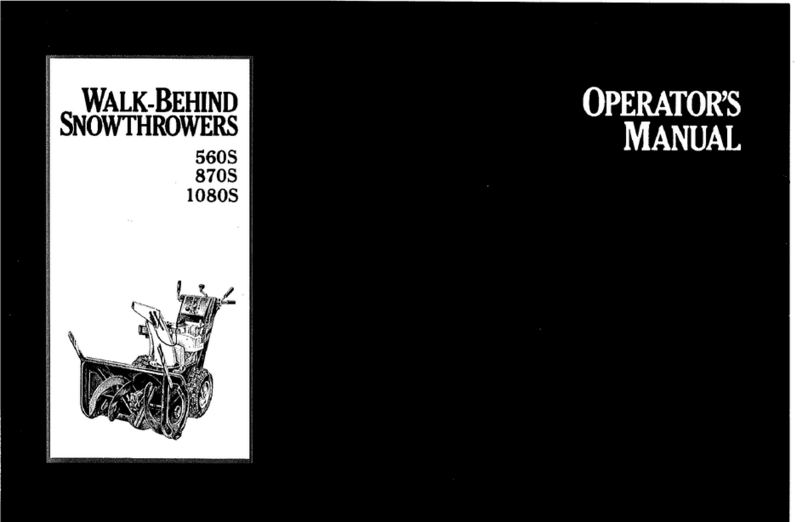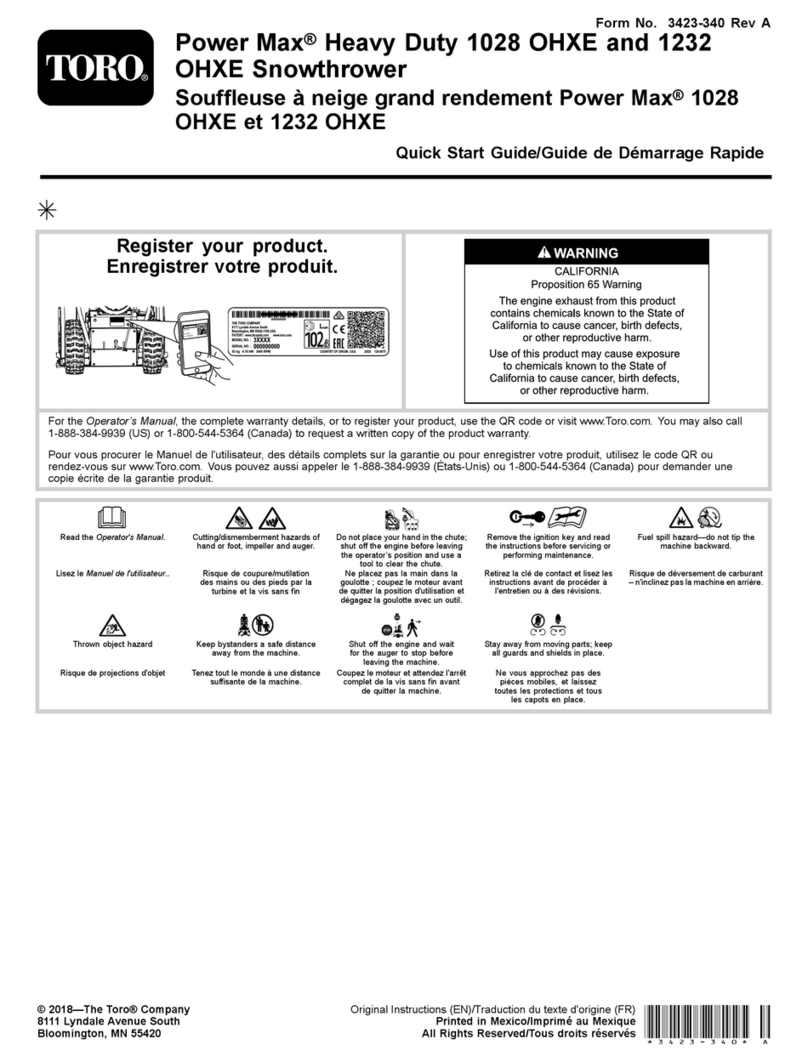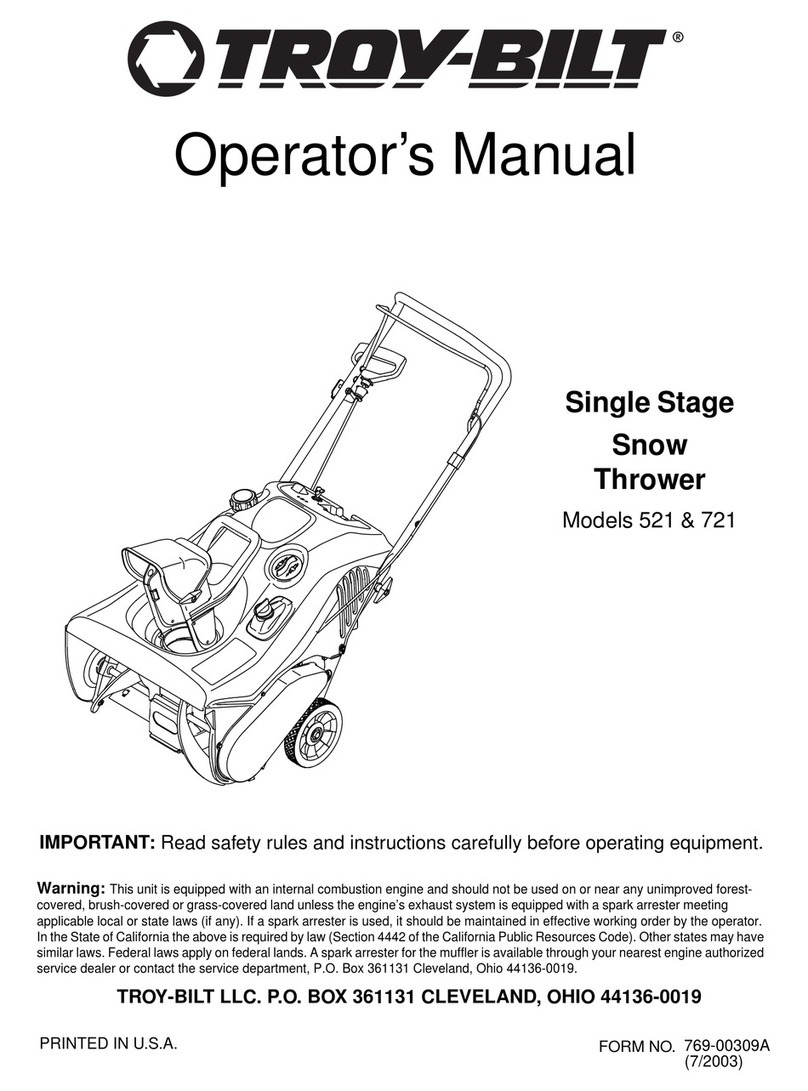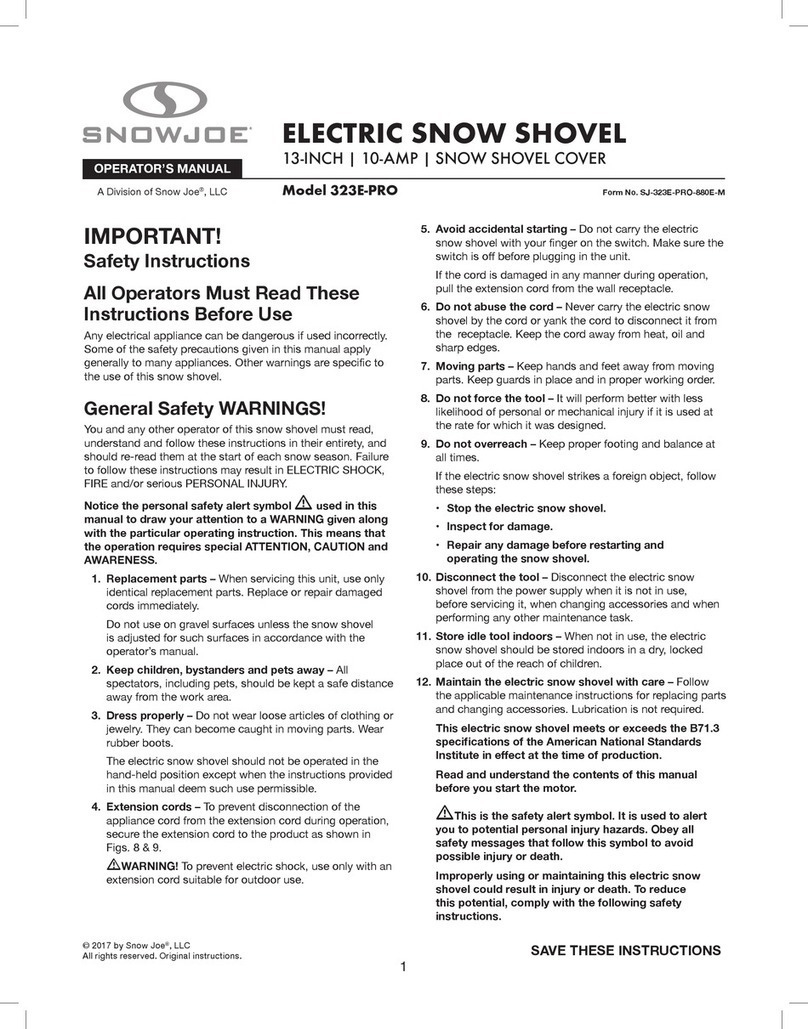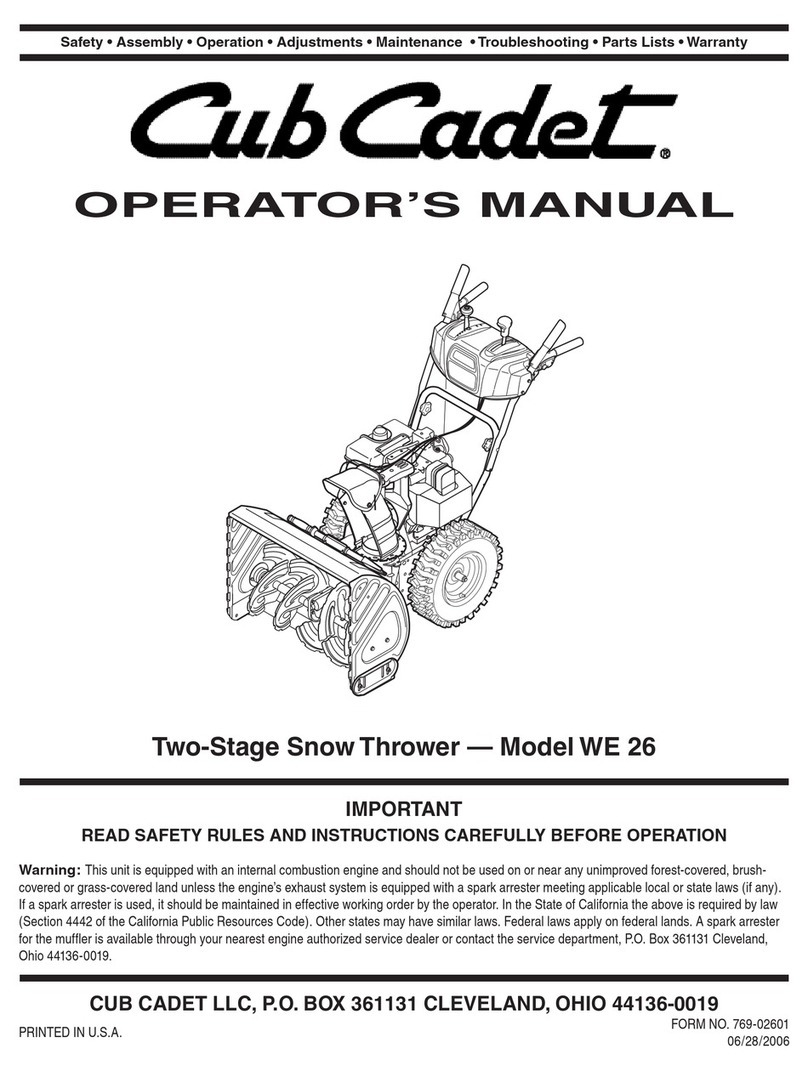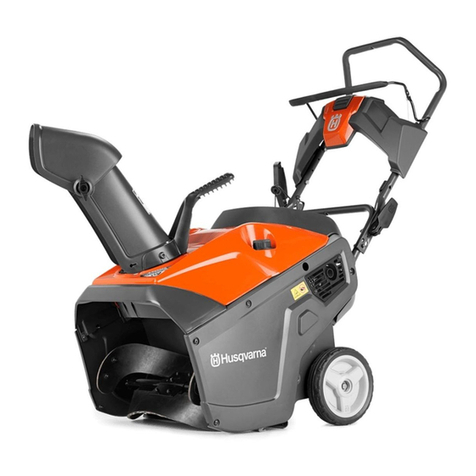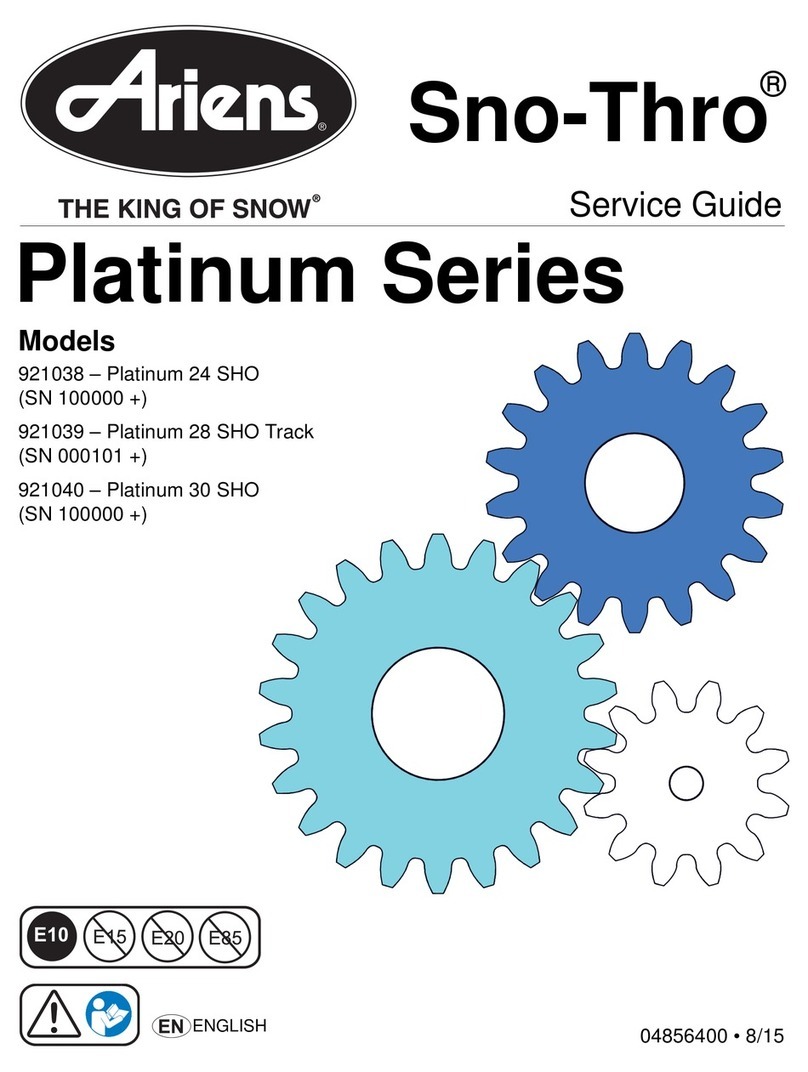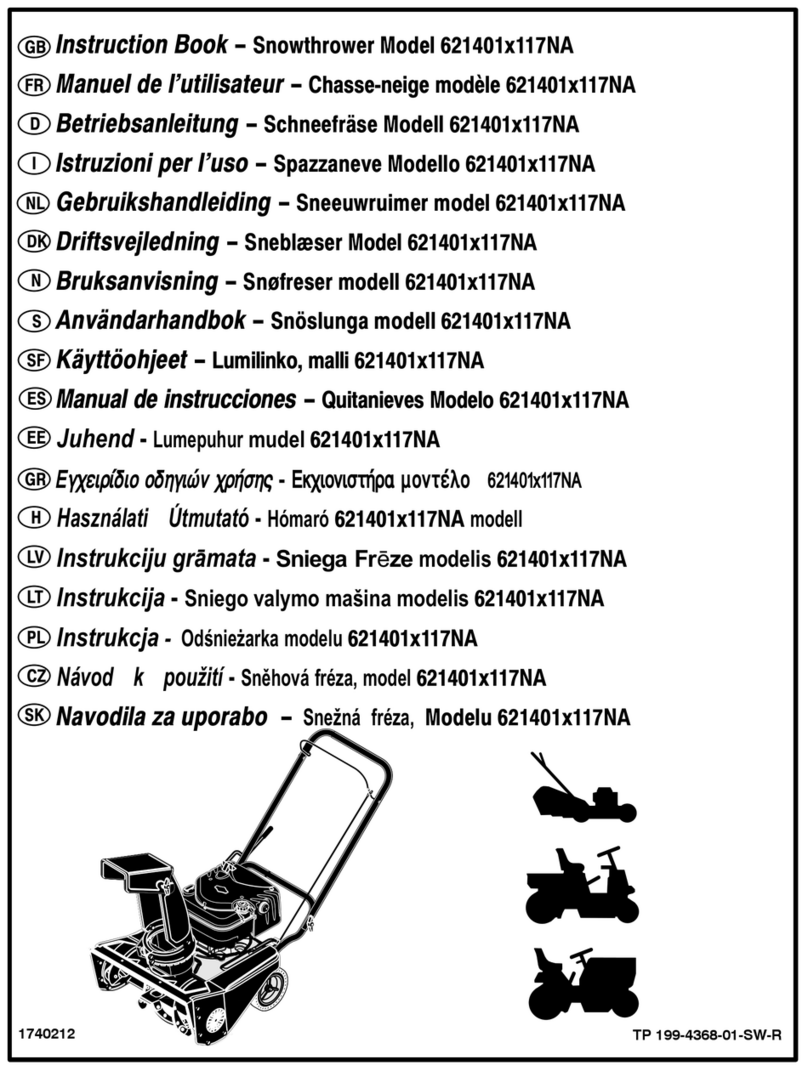Lea LE60130-30 User manual

LE60130-30
(022458)
IMPORTANT: Read and understand this manual before assembling or
operating this Electric Snowthrower. Improper use of Snowthrower can cause
injury. Keep this manual for future reference.



WARNING:
Read and understand all instruction.
1 PICTOGRAPH ILLUSTRATION AND EXPLANATION
1. Caution! Read the instruction manual and follow the warning and safety instructions!
2. Always switch off the appliance, disconnect the power and wait till the machine comes
to a standstill prior to maintenance, cleaning or repair work!
3. Caution! Blades do not stop immediately after switching off.
4. Danger! Objects may be thrown out at high speed when motor is running. Keep people,
pets and domestic animals out of the danger area.
5. Keep the mains cable free from the tines or blades. Tines or blades may damage the
cables and cause contact with live parts.
6. Caution! Unplug immediately if the power cord or plug becomes damaged!
7. Danger! Keep hands and feet away from the cutting equipment!
8. Caution! Always wear eye and ear protection.
9. Do not use the machine in wet weather conditions!
10. Wear safe, sturdy, nonskid footwear!
2 SAFETY INSTRUCTIONS
Read the operating instructions and act accordingly. Keep it for general use. Comply with
the safety information and the warning on the appliance.
• The appliance must be assembled correctly before use.
• Before inserting the plug into the mains socket, make sure that the socket ratings are
correct and correspond to those indicated on the rating label on the appliance.
• Never move the appliance by pulling at the cables.
• Always disconnect the appliance from the mains supply before transporting it to other
places.
•Always switch off the appliance before disconnecting any plug and socket connector or
extension cables.
• Keep children and pets away. All onlookers should be kept a safe distance away from the
appliance when it is in use.
• The user is responsible for third parties while working with the appliance.

• Be careful never to throw snow towards people or cars, and never allow anyone in front
of your snow thrower.
• People not acquainted with the operating instructions, children, juveniles who have not
yet reached the minimum age for using this appliance, and people under the influence of
alcohol, drugs or medication are not allowed to use the appliance.
• Only use the appliance for its designed purposes.
• Always use the appliance with the discharge chute attached.
• Keep hands and feet away from all rotating and moving parts.
• Never put your hand in the discharge chute or near the auger to remove snow, sticks or
other debris. Blocked auger can “spring back” when cleared and may cause personal
injury, even with the appliance stopped. Always use an object such as a long stick or
shovel handle to clear blockages.
• Wear safe, sturdy, nonskid footwear. Ensure that you have a good a stand, especially on
slopes.
• Wear safety glasses, and avoid any loose‐fitting clothing that could get caught in
moving parts. Be careful of long hair.
• Only work in daylight or sufficiently good artificial light.
• In order to start the appliance, the auger must be completely free to move.
• The use of the appliance is only permitted if the safety distance provided by the guide
bar is complied with.
• Always hold the handle bar firmly and walk, never run.
• Do not overload the appliance by attempting to clear snow at too fast rate.
• Slow down and turn corners slowly.
• Caution! Auger does not stop immediately after switching off.
• Always switch off the appliance, disconnect the plug and wait until the auger stops
before carrying out maintenance or cleaning work.
• Use caution when cleaning or performing maintenance on the appliance. DANGER!
Watch your fingers! Wear gloves!
• It is forbidden to move or modify any of the electrical and mechanical safety devices.
• The snow can sometimes hide objects that might clog the chute, or otherwise cause
damage. Clear the area of doormats, sleds, boards, wires and other debris.
• If the appliance strikes a foreign body, examine the appliance for signs of damage and
carry out any necessary repairs before restarting and continuing to work.
• If the appliance should start to vibrate abnormally, switch off the motor and check for the
cause immediately. Vibration is generally a warning of trouble.
• The appliance should be checked carefully before use. You should only work with an
appliance that is in good condition. If you notice any defect on the machine that may
cause danger to the operator, do not operate the appliance until defects are rectified.
• Replace worn or damaged parts for safety. Use only original spare parts. Parts not
produced by manufacturer may cause poor fit and possible injury.
• If the supply cord is damaged, it must be replaced by the manufacturer, its service agent
or similarly qualified persons in order to avoid a hazard.
• The machine should not be operated by means of an external timer‐switch or by means
of a separate system with remote control.

• Never allow children to operate the equipment. Never allow adults to operation the
equipment without proper instruction.
• Exercise caution to avoid slipping or falling, especially:
• Disengage all clutches and shift into neutral before starting the engine.
• Let engine and machine adjust to outdoor temperatures before starting to clear snow.
• Do not clear snow across the face of slopes. Exercise extreme caution when changing
direction on slopes.
• Do not attempt to clear steep slopes.
• Never operate the snowthrower near glass enclosure, automobiles, window well, offs,
etc without proper adjustment of the snow discharge angle.
• Never operate the machine at high transport speeds on slippery surface. Use care when
reversing.
• Use only attachments and accessories approved by the manufacturer of snowthrower.
• Always refer to owner’s guide instructions for important details if the snowthrower is to be
stored for an extended period.
• Maintain or replace safety and instructions labels as necessary.
3 ELECTRICAL SAFETY
• Design of the connection cable according to IEC 60245 (H 07RN‐F) with a core
cross‐profile section of at least:
- 1.5 mm2for cable lengths up to 25m
- 2.5 mm2for cable lengths over 25m
• Long and thin connection lines result in a potential drop. The motor does not reach any
longer its maximal power; the function of the device is reduced.
• Plugs and coupler outlets on connection cables must be made of rubber, nonrigid PVC
or other thermoplastic material of same mechanical stability or be covered with this
material.
• The connector of the connection cable must be splash proof.
• When running the connection line observe that it does not interfere, is not squeezed,
bended and the plug connection does not get wet.
• Wind off completely the cable when using a cable drum.
• Do not drive the device across the extension cable. Make sure that it is behind you in a
secure position. Place the cable on a path or area that has already been thatched.
• Do not use the cable for purposes for which it is not meant. Protect the cable against
heat, oil and sharp edges. Do not use the cable to pull the plug from the socket.
• Protect yourself against electric shocks.Avoid touching earthed parts with your body (e.g.
pipes, heating apparatus, cookers, fridges etc.).
• Do never connect a damaged cable to the mains. Do not touch a damaged cable before
it is disconnected from the mains. A damaged cable may cause contact with live parts.
• Do not use any defective connection cables.
• When working outdoors, only use extension cables especially approved and
appropriately labeled for out-door use.
• Do not set up any provisional electrical connections.

• Never bypass protective devices or deactivate them.
• Only hook up the machine by means of a fault‐current circuit breaker (30 mA).
• The electrical connection or repairs to electrical parts of the machine must be carried out
by a certified electrician or one of our customer service points. Local regulations ‐
especially regarding protective measures must be observed.
• Damaged mains must be replaced by the manufacturer or one of their service
workshops or a similar qualified person to prevent dangers.
• Repairs to other parts of the machine must be carried out by the manufacturer or one of
his customer service points. Use only original spare parts, accessories and special
accessory parts. Accidents can arise for the user through the use of other spare parts. The
manufacturer is not liable for any damage or injury resulting from such action.
4 DESCRIPTION (FIG. 1)
1. Main plug
2. Lock off button
3. Switch trigger
4. Handle
5. Front handle
6. Guide bar lower section
7. Discharge chute
8. Auger
9. Motor housing
5 ASSEMBLING
Guide bar (Fig. 1)
Take off the plastic clamp.
Slide the lower section into the upper tube.
Line up holes on each tube, and make sure that the internal cable (A) does not pass the
mounting holes.
Fix two sections firmly with the supplied screw and swing nut.
Motor housing (Fig. 1)
Connect socket (B) to the plug on the motor housing.
Fasten the housing by supplied 4 screws.
Front handle
Loosen the knob and lift up the handle bar to the operation position. (Fig. 2)
Adjust the height of the handle to a safe and comfortable position and fix it by the knob.
Connection the mains (Fig. 3)
Loop the extension cord and feed it through the rear handle. Rest the cord around the
cord hook. This will help prevent you from disconnecting the extension cord from the

product during operation. Warning! Do not handle the plug or the appliance with wet
hands or while standing in water. DANGER! Electric shock causes series injury and
death!
6 STARTING
Intend use
This appliance is only intended for sweeping of snow on steps, patios and decks in private
domestic and hobby gardens.
It is not designed for use in public areas, parks, sports areas, and in agriculture and
forestry. Using the application only on hard, flat surfaces free of sad, stone and debris,
wires and any other objects.
For any other purpose is considered incorrect and unapproved. The manufacturer is not
liable for any damage or injury resulting from such use. The user is entirely responsible for
any associated risks.
On/Off switch (Fig. 4)
Warning! The auger starts rotation immediately after switch on! Keep hands and
feet away from auger.
To switch on, hold the appliance firmly with two hands and press the safety lock off button
while press the On/Off switch trigger. Keep the switch trigger hold while release the button.
To stop the appliance, release the switch trigger and it automatically returns to its start
position.
7 REMOVING SNOW
• Before starting work, make sure that the area to be clear is free of stones, debris, wires
and any other objects.
• Make sure all fasteners (screws, nuts, etc.) are always fully tightened so that you can
work safely with the appliance.
• Check the auger for wear and tear at regular intervals.
• Position discharge chute in safe direction and angle, away from operator and
bystanders.
• Clearing snowfall often, before it gets too deep. Snow is best removed as soon as
possible after snow falls.
• Lift the auger off surface slightly before switch on.
• Switch on and tilt the appliance forward until the scraper blade contacts the ground.
Push the appliance forward at a comfortable rate of speed, yet slow enough to clear the
path completely. The width and depth of the snow determines your forward speed.
• Direct the snow to the right or to the left by holding the appliance at a slight angle. For
the most efficient snow removal, throw the snow downwind, and slightly overlap each
swath.
• The appliance can remove snow up to 15 cm deep in one pass. When clearing deeper
drifts, hold the appliance by the upper and lower handles and use a swinging or sweeping

motion. Shaving off the top layer and making multiple passes (Fig. 5). For large areas, a
definite pattern of operation is required to thoroughly clean an area of snow. These
patterns will avoid throwing snow in unwanted places as well as eliminating a second
removal of snow. (Fig. 6) Pattern A: Throw the snow to the right or left side where it is
possible, as on a long driveway it is advantage to start in the middle. Plow from one end to
the other, throwing snow to both sides. Pattern B: If the snow can only be thrown to one
side of the driveway or sidewalk (above), start on the opposite side.
• Scraping the snow all the way down to the pavement will wear out the scraper and auger.
To spare the machinery, one or two inches of snow can be left behind, to be handled with
de‐icing salt or a shovel.
• After clearing the snow, let the motor run for a few minutes so that the ice doesn’t freeze
any moving parts.
Then switch off the motor, wait for all moving parts to stop, and wipe the ice and snow off
the appliance.
Warning! To avoid serious personal injury, do not use hands or feet to unclog
chute.
8 MAINTENANCE AND STORAGE
Before carrying out any maintenance operations, cut off the electric power supply by
disconnecting the plug from the extension cable.
• Regular cleaning and maintenance of your appliance will ensure efficiency and prolong
the life of your appliance.
• After each operation, take apart and clean out the ice and debris from the ventilator and
its slot, auger and housings.
• Only use a cloth soaked with hot water and a soft brush to clean the application. Never
wet or spray water on the machine! l Do not use detergents or solvents as these could
cause irreparable damage to your appliance. Chemicals can destroy the plastic parts.
• To protect the application from corrosion when storing for a longer period, treat the metal
parts with harmless oil to the environment.
• Store the appliance in a dry room out reach of kids.
• Maintain or replace safety and instructions labels as necessary.
9 TECHNICAL DATE
LE60130-30 (QT3100)
Power supply voltage 230V-240V~50Hz
Power consumption 1300 W
Idle Speed 4000 min-1
Clearing width 300 mm
Maximum clearing depth 150 mm
Maximum throwing distance 6 m
Isolation class II
Weight 5 kg

Noise power level LWA106 dB (A)
Noise pressure level LPA 90 dB (A)
Acceleration handle under load 7 m/s2
10 ENVIRONMENT FRIENDLY DISPOSAL
You can help protect the environment! Please remember to respect the local regula
tions: hand in the non‐working electrical equipments to an appropriate waste disposal c
entre.

DECLARATION OF CONFORMITY (CE)
Who has signed below, Aurelio de Michele, authorised by Dunsch Europe SRL , with the
following address Via dell'Artigianato n. 10 ,I-29010 GRAGNANO TREBBIENSE (ITALY),
declares that the products brand LEAmodel LE60130-30(QT3100)with serial number of
year 2013 on (the year of manufacture is clearly indicated on the tool identification plate,
followed the serial number) , comply with all the requirements stated by the Directive
2006/42/EC of the European Parliament and of the Council of 17 May 2006 on machinery.
These tools also comply with the requirements of the following community directives:
•Directive 2004/108/EC
•Directive 2006/95/EC
•Directive 2000/14/EC
•ISO/DIS 8737:2008
·EN 60335-1:2002+A11:2004+A1:2004+A12:2006+A2:2006+A13:2008+A14:2010
+A15:2011
·EN 62233:2008
·EN 55014-1: 2006/+A1 :2009/+A2:2011
·EN 55014-2:1997/+A1:2001/+A2:2008
·EN 61000-3-2: 2006/+A1:2009/+A2:2009
·EN 61000-3-3: 2008
·EN 61000-3-11: 2000
·EN IS0 3744
Power (kW) 1,3
Measured sound power level dB(A) 89,9
Guaranteed sound power level dB(A)
(K=3.0) 106
Aurelio de Michele
Product Manager
17-07-2013
Table of contents
